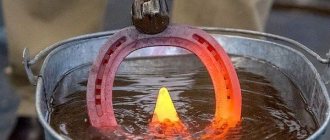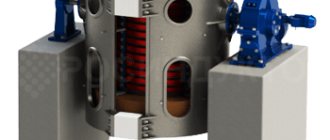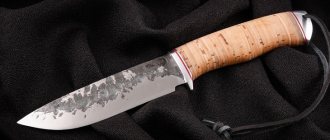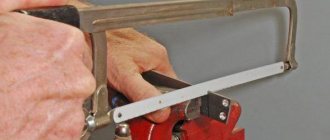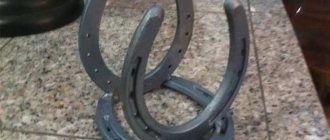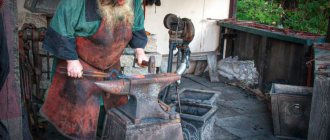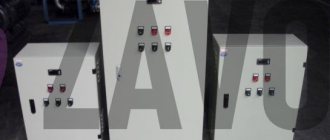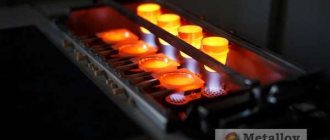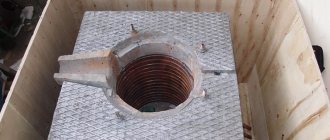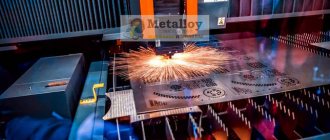In hydromechanical systems, devices and assemblies, parts that operate on friction, compression, and torsion are most often used. That is why the main requirement for them is sufficient hardness of their surface. To obtain the required characteristics of the part, the surface is hardened with high frequency current (HFC).
In the process of application, high-frequency hardening has shown itself to be an economical and highly effective method of heat treatment of the surface of metal parts, which gives additional wear resistance and high quality to the treated elements.
Equipment for performing induction hardening (HFC)
Induction hardening requires special technological equipment, which includes three main components: a power source - a high-frequency current generator, an inductor and a device for moving parts in the machine.
High-frequency current generators are electrical machines that differ in the physical principles of the formation of electric current in them.
- Electronic devices operating on the principle of vacuum tubes that convert direct current into alternating current of high frequency - tube generators.
- Electrical machine devices operating on the principle of inducing electric current in a conductor moving in a magnetic field, converting three-phase industrial frequency current into alternating current of high frequency - machine generators.
- Semiconductor devices operating on the principle of thyristor devices that convert direct current into alternating current of high frequency - thyristor converters (static generators).
Generators of all types differ in frequency and power of generated current
Types of generators Power, kW Frequency, kHz Efficiency
Lamp 10 – 160 70 – 400 0.5 – 0.7
Machine 50 – 2500 2.5 – 10 0.7 – 0.8
Thyristor 160 – 800 1 – 4 0.90 – 0.95
Surface hardening of small parts (needles, contacts, spring tips) is carried out using microinduction generators. The frequency they produce reaches 50 MHz, the heating time for hardening is 0.01-0.001 s.
Design of modern high-frequency HDTV installations
High-frequency induction HDTV installations are designated “HF”. Next in the model name is the maximum power consumption, measured in kVA, taking into account both active and reactive components, i.e. capacitive and inductive. The total power depends on the matching of the inductor with the capacitor bank of the HDTV installation and its resonant frequency. The resonant frequency in transistor generators is adjusted automatically in the operating frequency range. Read more >>>
The letter “A” in the model name means the presence of an automatic timer with the ability to pre-set power and time when heating and holding the part. There is also a third timer for cooling down time. There is a mode that allows you to work in an automatic cycle: heating - holding - cooling, without turning off the HDTV installation. In this mode, the third timer setting time can be used to replace the heated part. These functions allow heat treatment to be carried out with a high degree of repeatability.
The letter “B” in the model name means a binary design, in which the high-frequency universal transformer is made as a separate block More details>>>
As a rule, models with a power of 15 and 25 kVA are monoblock and have a duty cycle (continuous operating time) of 80%. When operating these devices in a 100% continuous cycle, you can buy them in a two-block design. Models from 40 kVA are always produced in a two-block design and are designed for a duty cycle of 100%. In this case, excellent cooling of the device is necessary, both high water pressure and low temperature.
Depending on the power of the HDTV installation, the high-frequency transformer unit is connected to the generator and the capacitor bank installed in the generator housing using a cable of various sections. There can be from one to three cables.
Universal high-frequency transformers that are equipped with HDTV installations of this class, as a rule, do not have a variable transformation ratio. A pleasant exception to this rule is the HF-80PKT model (the abbreviation stands for Switchable Transformation Ratio). On this model, you can set three different transformation ratios and use induction coils from one to 5–6 turns, depending on the diameter of the coil. It is precisely this kind of high-frequency installation that is recommended to be used to equip small induction hardening machines. Professional work on high-frequency hardening begins with the use of hardening transformers of the VChTZ series.
When purchasing a HDTV installation, you can order a universal high-frequency transformer with the number of turns of the output winding from one to three. For example, for a HF-60AV HDTV installation, the number of inductor turns for one turn of the output winding will be 1-2 on a diameter of 100 mm, for 2 turns of the output winding - 2-3 turns of the inductor, for three turns - 3-5 turns of the inductor.
Cooling of inductors for models HF-15A and HF-25A is carried out through the device itself. Inductors, starting with the HF-40AV model and more powerful ones, have their own input and output for cooling. The fundamental difference is that in this case, when quenching parts, quenching water or a water-based quenching liquid can be supplied to the inductor. In this case, the inductor simultaneously serves as a quenching sprayer. And the device itself can be cooled, as it should be, with distilled water at the required temperature.
Electrical power supply for HDTV installations with a power of up to 15 kVA is single-phase with a voltage of 220 V. Installations with a power of 25–160 kVA are powered by a three-phase network with a voltage of 380 V. At the rear, lower part of the HDTV installation case there is a grounding connection to protect personnel from electric shock, do not neglect it.
We can say that induction HDTV units are a symbiosis of an electric current converter and a water cooling system. Both of these systems must be maintained and maintained in good condition. Incorrect operation of any of them leads to breakdown of the device as a whole.
All units of transistor HDTV installations are equipped with sensors that turn off the device when the water pressure is low. It is forbidden to readjust them to a lower pressure. Deterioration of the cooling conditions of the device causes its breakdown! Buy a separate or more powerful pump for your installation, and it will reward you with trouble-free operation.
Please note that to create the required pressure in the cooling system, it is often necessary to use multi-blade pumps or run two single-blade pumps in series. The water pressure is checked using a pressure gauge at the inlet of the distribution comb of the cooling system on a device connected to water, i.e. under load.
Use only distilled water for cooling. Bad water causes salt deposits and worsening cooling conditions for device components. Using electrolysis, water corrodes water-cooled aluminum radiators of IGBT modules and diode bridges. Due to electrical conductivity, it disrupts the operation of electronic components and can cause electric shock to operating personnel.
It is necessary to check the supply voltage with the device turned on and at maximum heating power. The supply voltage should not drop under load by more than 5%. All induction HDTV units of the model range from HF-15 to HF-160AV are equipped with a protection system against possible overloads and overvoltages. You can find out more about them in the article here>>>
If any indicator lights up or a buzzer signal appears, remember the name of the indicator, turn off the device and, if possible, find out the cause of the malfunction. The most common reasons for shutdown of HDTV installations are insufficient water pressure, insufficient or excess supply voltage, short circuits in the inductor, and excess temperature in the multipoint control system. If indicators come on indicating internal problems, the HDTV unit should be sent for repair.
All devices of this class are equipped with an input switch - fuse - disconnector. After turning it on, power is supplied to the device and the idle mode is activated, during which the device control boards are powered. Starting and turning off the induction generator of the HDTV installation can be done in various ways. Pressing the green Start button, followed by switching off by pressing the red Stop button. With the foot control pedal connected - press the pedal - Start, release the Stop pedal.
In automatic mode, pressing the Start button starts the cyclic heating mode, pressing the Stop button turns it off. Upon completion of work, turn off the input switch - fuse - disconnector and de-energize the HDTV installation.
A typical circuit design of modern transistor HDTV installations is as follows. The diode bridges of the rectifier convert three-phase electric current into direct current. Then, the IGBT bridged modules generate alternating current. Which is fed to a resonant circuit formed by the primary winding of the HF transformer and a capacitor. The secondary winding of the HF transformer and the inductor connected to it with a heated part contribute to the process of creating frequency resonance. The presence of a high-frequency transformer ensures galvanic isolation of the inductor from the 380V supply network. Which is very important to prevent electric shock to thermal shock workers. The currents flowing in the inductor reach several thousand amperes, but the voltage remains safe for humans and does not exceed 30–50 volts.
The main control board, using sensors, collects information about the operation of the HDTV installation and issues commands to control the generation power and select the resonant frequency. The HDTV installation automatically selects and generates a resonant frequency depending on the number of turns of the inductor and the variable parameters of the heated part. However, only within certain limits. That is why modern HDTV installations have indicators of “Very low” and “Very high” operating frequencies of the device. In this case, you need to measure the generation frequency and select the number of turns of the inductor. Read more >>>
Moreover, the HDTV installation even “sees” the part inserted into the inductor and automatically produces the set power. When the part is removed, the power drops significantly.
Please note! HDTV installations are often transported by truck, almost like firewood. During such transportation, there is a high probability of breaking the connector contacts and loosening the contact bolts. It is for this reason that we recommend ordering commissioning work with the help of qualified service personnel. Miser pays twice! Power switches - transistor IGBT modules are not cheap, up to 10 thousand rubles, and sometimes several pieces burn out. So it's up to you...
Before transporting or storing in an unheated warehouse, thoroughly drain the cooling system, otherwise the remaining water will defrost the radiators.
Gas flame hardening
The method is used when processing large metal structures: machine parts, electrical machine components, rolling rollers, shafts made of cast iron, carbon, low-alloy steels, materials with low carbon content. The advantages of the technology are the preservation of surface cleanliness (there are no traces of oxidation processes on it) and relatively small deformation while maintaining the initial geometry of the workpiece.
All carbon steels can be processed by flame hardening.
Technology
Gas plasma hardening is performed in an acetylene-oxygen flame. During heating with a special burner, the surface temperature increases at a high speed. Due to this, the core of the part does not change its properties. The thickness of the surface treatment is adjusted by changing the speed of movement of the torch and the intensity of the supply of the gas mixture. Metal is cooled by immersion in a fast-cooling liquid or by treatment in the shower.
Process parameters
The technology involves the use of acetylene-oxygen flame with a temperature of +2400...+3100 °C. The hardening depth is most often 2-4 mm. The hardness of the layer formed after heat treatment is 56 HRC.
Making equipment yourself
Installing induction heating is not very difficult. Even someone who has no experience will cope with the task after careful study. Before you start, you need to stock up on the following necessary items:
- Inverter. It can be used from a welding machine, is inexpensive and will have the high frequency required. You can make it yourself. But this is a time-consuming activity.
- Heater body (a piece of plastic pipe is suitable for this; induction heating of the pipe in this case will be the most effective).
- Material (wire with a diameter of no more than seven millimeters will do).
- Devices for connecting the inductor to the heating network.
- Mesh for holding the wire inside the inductor.
- An induction coil can be made from copper wire (it must be enameled).
- Pump (to supply water to the inductor).
Advantages of high-frequency HDTV installations
- The low price allows you to pay for your induction equipment in just six months.
- Great energy savings. This is modern energy-saving equipment based on transistor IGBT modules. Efficiency - more than 90%!
- Small dimensions and weight allow HDTV installations to be located next to the equipment of the subsequent technological cycle.
- Two-block HDTV installations can operate continuously. Single-block HDTV installations are operational up to 80% of the operating cycle.
- They have negligible idle power and do not require warming up.
- They provide rapid heating of workpieces from the inside, from a depth of 1–2 mm.
- Induction soldering is the strongest of all existing types of soldering, due to the vibration of the solder and flux at the frequency of magnetic field generation.
- HDTV units replace electric and gas furnaces and provide high workplace ergonomics and comfortable working conditions.
- There is no high voltage or high frequencies, which is safe for personnel.
- Easy to learn, skills can be acquired in 10 minutes.
What is HDTV hardening?
High-frequency hardening is a surface thermal effect on steel, which is carried out by applying a high-frequency current. After the technological process, the strength and hardness indicators increase, which improves the performance characteristics of the product. The technological process consists of several stages:
- heating to high temperature;
- holding at one temperature;
- cooling.
The depth of HDTV hardening depends on the duration of each stage.
Using equipment that carries out the steel hardening process, you can perform high-frequency soldering. To do this, a current of even higher frequency is supplied to the working surface.
Heating inductor HDTV
(Latin inductor, from induce - I introduce, find, encourage) an electromagnetic device designed for induction heating of HDTV. The HDTV inductor consists of two main parts - an inductive wire, with the help of which an alternating magnetic field is created, and current leads for connecting the inductive wire to a source of electrical energy. A body conducting electric current, placed in a magnetic alternating field, heats up due to the thermal effect of eddy currents induced in areas of the product directly covered by the inductive wire. Basically, all types of HDTV inductors can be divided into two types: simultaneous and continuous-sequential heating. In the first case, the area of the inductive wire is approximately equal to the area of the heated surface, which makes it possible to simultaneously heat all its sections. In the second method, the heated product is moved relative to the induction wire, sequentially heating sections of the surface of the product.
What's going on inside
Without going into too much detail, it should be noted that the structure of hardened steel comes in three main types: martensitic, troostite and sorbitol. The mechanical characteristics depend on the ratio of these crystalline formations
In this case, it does not matter which of them and how it affects the hardness. The result depends on how hot the metal is and how quickly it is cooled
Thus, surface hardening can occur when the temperature of the top layer increases and subsequent cooling occurs either as a result of heat transfer to the external environment (liquid, most often oil, water and brine, air or other agents), or due to partial loss of heat into the product. In this case, polymorphic transformations occur layer by layer, depending on the degree to which the critical temperature is reached, which affects the formation of a new crystal structure.
As a result, changes occur in the following areas:
– Upper, subjected to hardening.
– Intermediate, partially hardened. It is also called the thermally affected zone.
– Area of reduced hardness.
– The interior has not been modified.
Advantages and disadvantages
Hardening of parts using HDTV has both advantages and disadvantages. The advantages include the following:
- After high-frequency quenching, the part retains a soft center, which significantly increases its resistance to plastic deformation.
- The cost-effectiveness of the process of hardening HDTV parts is due to the fact that only the surface or zone that needs to be hardened is heated, and not the entire part.
- During mass production of parts, it is necessary to set up the process and then it will be automatically repeated, ensuring the required quality of hardening.
- The ability to accurately calculate and adjust the depth of the hardened layer.
- The continuous-sequential hardening method allows the use of low-power equipment.
- A short heating and holding time at high temperature contributes to the absence of oxidation, decarburization of the top layer and the formation of scale on the surface of the part.
- Rapid heating and cooling does not result in large warpage and distortion, which allows for a reduction in finishing allowance.
But it is economically feasible to use induction installations only for mass production, and for single production, purchasing or manufacturing an inductor is unprofitable. For some parts with complex shapes, induction production is very difficult or impossible to obtain a uniform hardened layer. In such cases, other types of surface hardening are used, for example, gas-flame or volumetric hardening.
Purpose of high-frequency HDTV installations
High-frequency HDTV installations are the most universal in application.
Here are just a few of their uses:
- Hardening and tempering of shafts, gears, guides, pipes, flat surfaces and internal holes. The depth of the hardened layer is from 1.5 to 3 mm.
- Through heating of plates, bolt and nut blanks for hot stamping. Heating before bending, forging, volumetric deformation and drawing.
- Thermal setting and removal of shaft, bearing and turbine parts.
- Soldering of ferrous and non-ferrous metals. Brazing of cutters, chisels, drills, copper bars, squirrel cages of electric motor rotors.
- Melting of any magnetic and non-magnetic materials. Such as: silicon, steel, cast iron, copper, brass, bronze, gold, silver, lead, aluminum, magnesium.
- Induction welding of straight-seam pipes.
- Release of prestressed reinforcement.
- Levitation melting of metals.
- Welding of metals and plastics.
Tip: You can call the manager and explain the induction heating tasks right now. But to save time, it is better to send us a drawing or sketch of your parts. Don't forget to specify the heating zone and temperature. And for hardening, also the depth of the hardened layer.
Composition of the hardening complex HDTV "TESLINE"
- IGBT based induction heating installation
- Inductor-sprayer
- Mechanism for positioning the part and inductor for high-frequency hardening “A##” Rotation axis – vertical location
- Moving the inductor along the part
- The inductor axis positioning mechanism is driven using a joystick
- Pump with solenoid valve for supplying quenching liquid to the inductor sprayer.
- Pump for pumping out quenching liquid
- Pump for supplying cooling water to the unit
- Remote electronic control panel
- Push-button control panel
Set of technical documentation Operating manual
Safety precautions when working
- The main danger during work is the risk of burns from heated elements of the installation and molten metal.
- The lamp circuit includes high-voltage elements, so it must be placed in a closed housing to prevent accidental contact with the elements.
- The electromagnetic field can affect objects located outside the device body. Therefore, before work, it is better to wear clothes without metal elements and remove complex devices from the operating area: phones, digital cameras.
It is not recommended to use the device for people with implanted pacemakers! A furnace for melting metals at home can also be used to quickly heat metal elements, for example, when tinning or forming them. The operating characteristics of the presented installations can be adjusted to a specific task by changing the parameters of the inductor and the output signal of the generating sets - this way you can achieve their maximum efficiency.
Type
How is the temperature selected?
To carry out high-quality hardening of a steel workpiece, you need to select a processing temperature, which depends on the type of material being processed:
- Hypoeutectoid steels contain less than 0.8% carbon. During processing they are heated to a temperature of 850 degrees. After heating, the parts are quickly cooled. She is immersed in a bath of coolant.
- Hypereutectoid steels contain more than 0.8% carbon. Heats up to a temperature of 800 degrees. Thus, incomplete hardening occurs.
The peculiarities of the induction effect on metal surfaces do not allow the processing of steels in which the percentage of carbon does not exceed 0.5%. To complete the technological process, it is necessary to eliminate the tension between the core and the surface of the product. To do this, low temperature tempering is carried out. The workpiece is placed in an oven heated to a temperature of 200 degrees Celsius. When the temperature drops, the product is allowed to cool at room temperature.
Hardening steel (Photo: Instagram / redventru)
Installation for induction heating of HDTV
The first induction heating installation appeared in the 19th century. Then scientists managed, based on the Joule-Lenz and Faraday-Maxwell laws, to create the first melting furnace that could melt metal under the influence of high-frequency currents. Later, high-frequency heating became more widespread and began to be studied, creating more and more new installations that could not only melt metal using high-frequency currents, but also carry out other types of heat treatment, for example, high-frequency hardening, soldering, welding, forging , deformation, etc. And in the twentieth century, it was possible to obtain the first samples of various installations. A modern induction heating installation - a high-frequency installation - is capable of performing almost all types of high-temperature metal processing.
Induction heating installation - types of processing
As mentioned above, an induction heating installation can easily cope with all types of high-temperature processing of metal products. The main tasks that the UIN copes with are:
- HDTV soldering. It began to be produced at enterprises much more often with the advent of induction heating, because it allows high-quality processing of metal without compromising the integrity of its structure.
- Melting metal. The induction heating unit is designed to work with all types of metals. It will do an excellent job not only with ferrous, but also with non-ferrous and even precious metals.
- HDTV hardening. Most often, hardening is performed on steel products that are constantly exposed to mechanical stress from external factors. High-frequency hardening is undeniably high-quality and uniform.
- Forging, plastic, deformation, etc. All these operations are carried out in a special induction installation called a forge heater.
- Heat treatment of metal surface. Most often it is performed in relation to welded seams of pipes to smooth out residual stress in the metal after intervention of the welding machine in its structure.
In addition to the above operations, the induction heating installation can handle other types of heat treatment well. If you need to heat metal, perform firing or annealing, or get rid of some harmful chemicals, then the HDTV installation will become an indispensable assistant.
Induction heating installation - types
Induction heating installations are divided into three types according to frequency of operation
When choosing the operating frequency of an installation, it is important to pay attention to what tasks this or that installation is intended to perform.
- Medium-frequency induction heating installations are installations operating at the lowest frequencies. The operating frequency of this type of induction installation ranges from 0.5 – 20 KHz.
- Mid-frequency installations are used in cases where deep hardening of a part is required; for soldering massive products, which also requires a depth of heat penetration into the part; for melting all types of metals.
- High-frequency induction heating installations are installations that operate at a higher frequency than medium-frequency, but lower than ultra-high-frequency. The operating frequency of this type of induction installation is 20-40 kHz, and in some cases reaches 30-100 kHz. At the same time, the high-frequency UIN has a small depth of heat penetration into the metal - no more than 3 mm. The high-frequency induction unit is the most versatile because it can cope with most metal heat treatment operations.
- Ultra-high-frequency induction heating installations are installations with the highest operating frequency. Operating frequency from 100 kHz. However, the depth of heat penetration in the microwave UIN is no more than 1 millimeter. Ultrahigh-frequency induction heating installations are most often used for surface hardening of high-frequency high-frequency materials, for heating small workpieces and for soldering thin and thin-walled products.
Each induction heating installation has its own characteristics. If you do not know how to choose an induction heating installation for your enterprise, then prepare a technical specification, based on which ELSIT specialists will help you select the most suitable equipment.
If you notice an error, select a piece of text and press Ctrl+Enter
xn--h1afsf5c.xn--p1ai
Scope of application of HDTV surface heat treatment
Surface hardening with HDTV in Moscow
By changing the voltage parameters in the inductor, it allows you to set the hardening depth so accurately that the result can be predicted in advance and its control is significantly easier. The method is more suitable for large parts, such as crankshafts or other similar products. They are gradually passed through an inductor, hardening along the entire length. Surface hardening with high-frequency currents is ordered in relation to bulk products, the strength and wear resistance of which directly depends on the properties of the surface layer.
HDTV heat treatment
. The extensive database of the site allows you to:
- place an order in a short time even if there are non-standard requirements;
- select a contractor directly in the customer’s region;
- It is guaranteed to find a company that will not have difficulties fulfilling the order due to the lack of the necessary equipment or specialists of the required level.
Induction heating parameters
Induction heating is characterized by three parameters: power density, heating duration and current frequency. Specific power is the power converted into heat per 1 cm2 of the surface of the heated metal (kW/cm2). The heating rate of the product depends on the specific power: the higher it is, the faster the heating occurs.
The duration of heating determines the total amount of transferred thermal energy, and accordingly the temperature achieved
It is also important to take into account the frequency of the current, since the depth of the hardened layer depends on it. The frequency of the current and the depth of the heated layer are in opposite relationships (second formula)
The higher the frequency, the smaller the heated volume of metal. By choosing the specific power value, heating duration and current frequency, it is possible to change within a wide range the final parameters of induction heating - the hardness and depth of the hardened layer during hardening or the heated volume when heating for stamping.
In practice, the controlled heating parameters are the electrical parameters of the current generator (power, current, voltage) and heating duration. Using pyrometers, the heating temperature of the metal can also be recorded. But more often there is no need for constant temperature control, since the optimal heating mode is selected, which ensures constant quality of hardening or heating of the HDTV. The optimal hardening mode is selected by changing the electrical parameters. In this way, several parts are hardened. Next, the parts are subjected to laboratory analysis with recording of hardness, microstructure, distribution of the hardened layer in depth and plane. When underheated, residual ferrite is observed in the structure of hypoeutectoid steels; When overheated, coarse-needle martensite appears. Signs of defects when heating HDTV are the same as with classical heat treatment technologies.
With surface hardening, high-frequency heating is carried out to a higher temperature than with conventional volumetric hardening. This is due to two reasons. Firstly, at a very high heating rate, the temperatures of the critical points at which the transition of pearlite to austenite occurs increase, and secondly, it is necessary that this transformation be completed within a very short heating and holding time.
Despite the fact that heating during high-frequency hardening is carried out to a higher temperature than during normal hardening, the metal does not overheat. This happens because the grain in steel simply does not have time to grow in a very short period of time. It is also worth noting that, compared with volumetric hardening, the hardness after high-frequency hardening is higher by approximately 2-3 HRC units. This provides higher wear resistance and surface hardness of the part.
Advantages of hardening with high frequency currents
- high process productivity
- ease of adjustment of the thickness of the hardened layer
- minimal warping
- almost complete absence of scale
- possibility of complete automation of the entire process
- possibility of placing a hardening unit in the machining flow.
Most often, parts made of carbon steel containing 0.4-0.5% C are subjected to surface high-frequency hardening. These steels, after hardening, have a surface hardness of HRC 55-60. At higher carbon contents there is a risk of cracks due to sudden cooling. Along with carbon steels, low-alloy chromium, chromium-nickel, chromium-silicon and other steels are also used.
What is the hardening of metal?
The ancient blacksmiths knew that the effect of high temperature on metal can change its structure and properties and actively used this in practice. Subsequently, it was scientifically established that hardening of products made of steel, which involves heating and subsequent cooling of the metal, can significantly improve the mechanical characteristics of finished products, significantly increase their service life and even ultimately reduce their weight by increasing the strength of the part. What’s noteworthy is that hardening parts made from inexpensive steel makes it possible to give them the required characteristics and successfully use them instead of more expensive alloys.
The meaning of the process, which is called hardening of steel alloy products, is to heat the metal to a critical temperature and then cool it. The main goal pursued by this heat treatment technology is to increase the hardness and strength of the metal while simultaneously reducing its ductility.
There are various types of hardening and subsequent tempering, differing in modes of implementation, which determine the final result. Hardening modes include the heating temperature, the time and speed of its implementation, the time the part is kept in a state heated to a given temperature, and the speed at which cooling is carried out.
The most important parameter when hardening metals is the heating temperature, upon reaching which the atomic lattice is rearranged. Naturally, for different grades of steel, the critical temperature value is different, which depends, first of all, on the level of carbon content and various impurities in their composition.
After hardening, both the hardness and brittleness of the steel increases, and a layer of scale appears on its surface, which has lost a significant amount of carbon. The thickness of this layer must be taken into account when calculating the allowance for further processing of the part.
Iron-carbon phase diagram
When hardening products made of steel alloys, it is very important to ensure a given cooling rate of the part, otherwise the already rearranged atomic structure of the metal may go into an intermediate state. Meanwhile, too rapid cooling is also undesirable, as it can lead to the appearance of cracks on the part or to its deformation
In order to avoid the formation of such defects, the cooling rate after the temperature of the heated metal drops to 200 degrees Celsius is somewhat slowed down.
To heat parts made of carbon steel, chamber furnaces are used, which can heat up to 800 degrees Celsius. For hardening certain grades of steel, the critical temperature can be 1250–1300 degrees Celsius, so parts made from them are heated in a different type of furnace. The convenience of hardening steel of these grades lies in the fact that products made from them are not subject to cracking when cooled, which eliminates the need for preheating.
Heating of steel during hardening with high frequency currents
For high-quality hardening of steels, it is important to ensure not only the level of heating, but also its uniformity. If the part is massive or has a complex configuration, it is possible to ensure uniform heating only in several approaches
In such cases, heating is carried out with two delays, which are necessary so that the achieved temperature is evenly distributed throughout the entire volume of the part. The total heating time also increases if several parts are placed in the oven at the same time.
This is interesting: Hardening steel 50 - temperature, hardness, structure
Temperature selection
For the correct completion of the hardening process, the correct selection of temperature, which depends on the material used, is very important.
Steels based on carbon content are divided into hypoeutectoid - less than 0.8% and hypereutectoid - more than 0.8%. Steel with carbon less than 0.4% is not hardened due to the resulting low hardness. Hypoeutectoid steels are heated slightly above the temperature of the phase transformation of pearlite and ferrite to austenite. This occurs in the range of 800-850°C. Then the workpiece is quickly cooled. When cooled sharply, austenite transforms into martensite, which has high hardness and strength. A short holding time makes it possible to obtain fine-grained austenite and fine-needle martensite; the grains do not have time to grow and remain small. This steel structure has high hardness and at the same time low brittleness.
Hypereutectoid steels are heated slightly lower than hypoeutectoid steels, to a temperature of 750-800°C, that is, incomplete hardening is performed. This is due to the fact that when heated to this temperature, in addition to the formation of austenite, a small amount of cementite, which has a higher hardness than martensite, remains undissolved in the metal melt. After rapid cooling, austenite transforms into martensite, and cementite remains in the form of small inclusions. Also in this zone, carbon that has not had time to completely dissolve forms solid carbides.
In the transition zone during high-frequency quenching, the temperature is close to the transition temperature, and austenite with ferrite residues is formed. But, since the transition zone does not cool down as quickly as the surface, but cools down slowly, as during normalization. At the same time, the structure in this zone improves, it becomes fine-grained and uniform.
After cooling, high compressive stresses remain on the metal surface, which increase the performance properties of the part. Internal stresses between the surface layer and the middle must be eliminated. This is done using low-temperature tempering - holding at a temperature of about 200°C in an oven. To avoid the appearance of microcracks on the surface, it is necessary to minimize the time between hardening and tempering.
You can also carry out the so-called self-tempering - cool the part not completely, but to a temperature of 200 ° C, while heat will remain in its core. Then the part should cool slowly. This will equalize internal stresses.
Furnaces for heat treatment of metal – LLC
Equipment for heat treatment of metals is intended for carrying out various types of heat treatment (hardening, annealing, tempering) of metal products. For each procedure, only a profile oven operating in a certain temperature range should be used.
Heat treatment changes the quality properties of metal workpieces. High-quality heat treatment of metals and their alloys is possible only in specialized industrial heat treatment furnaces that have the necessary functionality.
The selection of such equipment should be taken very seriously.
For questions regarding the purchase of equipment, please contact the marketing department of Termolit LLC
Tel./F.:; 42-02-19; 42-03-14
Mobile:; (098)63-502-63;
Email: [email protected] ;
Furnaces for heat treatment of metal are very popular equipment in such areas as:
- mechanical engineering;
- aerospace industry;
- metallurgical industry;
- electronics industry;
- chemical industry;
- jewelry making;
The temperature in the working chamber of the furnace reaches up to 1300°C. The ovens are equipped with an automated door lifting system, making work with workpieces efficient and also safe.
Types, design and advantages of industrial furnaces for heat treatment
The purpose of heat treatment of metal is to improve the structure and impart the necessary properties: strength, wear resistance, hardness, toughness and others. Heat treatment includes the following operations: heating to a certain temperature, then holding for the required time, and cooling at the required speed. The most common operations are annealing, hardening, normalizing, tempering, and carburization.
A vacuum oven is one of the most versatile devices that can be used during various heat treatments. Such furnaces are capable of performing large volumes of work, which is sometimes beyond the capabilities of even more expensive equipment.
Any type of heat treatment is not a difficult problem for vacuum furnaces, the functionality of which can cope with all the necessary processes. Among all the elements of equipment, the most important part can be identified - the heating chamber, where all work processes take place. It is on this that the operation of the entire mechanism is based, which is why during the development process we paid great attention to it so that nothing happened to the heating chamber during processing. According to their design, vacuum furnaces are divided into two main categories: classic and retort.
Induction furnaces have their own differences and advantages that other types of devices do not have. The main feature of induction furnaces is a unique heating technology, thanks to which all the heat is directed exclusively to the material itself, bypassing the free space of the furnace itself. This technology allows for very fast and high-quality processing of materials, while other devices cannot even come close to them in terms of productivity. Therefore, induction equipment is becoming increasingly popular.
Modern equipment for heat treatment of metals has the following advantages:
- compactness;
- high performance;
- full control of heat treatment processes;
- reduction of processing time;
- quick change of processing modes;
- significant reduction in energy costs;
- ease of maintenance;
- high degree of automation.
Why is it worth placing an order at Termolit LLC?
The Termolit enterprise provides an excellent opportunity to buy a furnace for heat treatment of metal, the price of which will be quite affordable. You purchase products directly from the manufacturer, so you do not overpay large sums to intermediaries. If you want to order special high-quality equipment, contact Termolit LLC. The company specializes in the production of equipment for heat treatment of metals, which are used in industrial areas of working with metal, and is ready to offer its customers a wide range of high-quality and reliable products.
We sell electric furnaces for metal processing, as well as a wide selection of equipment for hardening, tempering, welding, forging and other operations. A furnace for heat treatment of metal, the price of which will be quite affordable, is accompanied by a full set of documentation and a guarantee from the manufacturer. When carrying out individual orders, we take into account both technical standards and the wishes of the customer.
- To learn more
- To learn more
Source: https://termolit.com/pechi-dlya-termoobrabotki-metalla/
Advantages and disadvantages
Any metal processing method has strengths and weaknesses. Advantages:
- Products that have been hardened by high-frequency currents retain a soft center. This makes them more resistant to plastic deformation.
- The hardening depth can be adjusted.
- The metal surface is heated for a short time. Thanks to this, no oxidation processes occur.
- Ability to process products of various shapes and sizes.
- No carbon deposits form on the surface of the workpieces.
- Minimal change in dimensions after the technological process. This allows you to use a slight allowance on the finished part.
Flaws:
- It is not profitable to purchase equipment for working in a workshop or garage, since it is expensive.
- It is impossible to create an induction installation with your own hands.
The machines are used in the serial production of wear-resistant parts.
Table No. 1
| options | GCK1050 | GCK10120 | GCK10200 | GCQ10300 | GCQ10500 |
| Max. shaft length, mm | 500 | 1200 | 2000 | 3000 | 5000 |
| Max. engine stroke, mm | 600 | 1300 | 2100 | 3200 | 5200 |
| Max. Workpiece diameter, mm | 300 | 400 | 400 | 500 | 600 |
| Max. weight of the workpiece, kg | 50 | 150 | 200 | 400 | 800 |
| Speed of movement of the workpiece, mm/s | 1-30 | 1-30 | 1-30 | 1-30 | 1-30 |
| Lowering speed of the workpiece, mm/s | 120 | 120 | 120 | 120 | 120 |
| Main shaft rotation speed, rpm | 1-200 | 1-200 | 1-200 | 1-200 | 1-200 |
| Electric power machine engine, kW | 1,5 | 2,5 | 2,5 | 4 | 4 + 1,5 |
| Machine weight, kg | 900 | 1600 | 2500 | 3240 | 4000 |
| Dimensions, mm | 1100x900x2000 | 1720x840x3600 | 1720x840x5300 | 2700x1300x5800 | 3200x1900x7800 |
Induction installation
The HDTV induction heat treatment unit is a high-frequency generator and inductor for HDTV hardening. The part to be hardened can be located in or near the inductor. The inductor is made in the form of a coil, with a copper tube wound on it. It can have any shape depending on the shape and size of the part. When alternating current passes through the inductor, an alternating electromagnetic field appears in it, passing through the part. This electromagnetic field causes eddy currents known as Foucault currents to occur in the workpiece. Such eddy currents, passing through layers of metal, heat it to a high temperature.
HDTV induction heater
A distinctive feature of induction heating using HDTV is the passage of eddy currents on the surface of the heated part. This way, only the outer layer of the metal is heated, and the higher the frequency of the current, the smaller the depth of heating, and, accordingly, the depth of hardening of the high-frequency frequency. This makes it possible to harden only the surface of the workpiece, leaving the inner layer soft and tough to avoid excessive brittleness. Moreover, you can adjust the depth of the hardened layer by changing the current parameters.
The increased frequency of the current allows you to concentrate a large amount of heat in a small area, which increases the heating rate to several hundred degrees per second. Such a high heating rate moves the phase transition to a higher temperature zone. In this case, the hardness increases by 2-4 units, to 58-62 HRC, which cannot be achieved with volumetric hardening.
For the correct implementation of the HDTV hardening process, it is necessary to ensure that the same clearance is maintained between the inductor and the workpiece over the entire hardening surface, and mutual touching must be avoided. This is ensured, if possible, by rotating the workpiece in the centers, which allows for uniform heating, and, as a consequence, the same structure and hardness of the surface of the hardened workpiece.
The inductor for hardening HDTV has several versions:
- single- or multi-turn annular - for heating the outer or inner surface of parts in the form of bodies of rotation - shafts, wheels or holes in them;
- loop - for heating the working plane of the product, for example, the surface of the bed or the working edge of the tool;
- shaped - for heating parts of complex or irregular shape, for example, the teeth of gear wheels.
Depending on the shape, size and depth of the hardening layer, the following HDTV hardening modes are used:
- simultaneous - the entire surface of the workpiece or a certain zone is heated at once, then also cooled simultaneously;
- continuous-sequential - one zone of a part is heated, then when the inductor or part is displaced, another zone is heated, while the previous one is cooled.
Simultaneous high-frequency heating of the entire surface requires large amounts of power, so it is more profitable to use it for hardening small parts - rolls, bushings, pins, as well as part elements - holes, necks, etc. After heating, the part is completely lowered into a tank with coolant or sprayed with a stream of water.
Continuous-sequential hardening of high-frequency particles allows you to harden large-sized parts, for example, the crowns of gear wheels, since during this process a small zone of the part is heated, which requires less power of the high-frequency generator.
Cooling parts
Cooling is the second important stage of the hardening process; the quality and hardness of the entire surface depends on its speed and uniformity. Cooling occurs in coolant tanks or by spray. For high-quality hardening, it is necessary to maintain a stable temperature of the coolant and prevent it from overheating. The holes in the sprayer must be of the same diameter and spaced evenly, this way the same metal structure on the surface is achieved.
To prevent the inductor from overheating during operation, water is constantly circulated through the copper tube. Some inductors are made combined with a workpiece cooling system. Holes are cut in the inductor tube through which cold water enters the hot part and cools it.
Hardening with high frequency currents
Hardening of high-frequency steel - varieties:
Stationary high-frequency hardening.
It is used for hardening small flat parts (surfaces). In this case, the position of the part and the heater is constantly maintained.
Continuous-sequential high-frequency hardening
. When carrying out this type of hardening, the part either moves under the heater or remains in place. In the latter case, the heater itself moves in the direction of the part. This high-frequency hardening is suitable for processing flat and cylindrical parts and surfaces.
Tangential continuous-sequential high-frequency hardening
. It is used when heating exclusively small cylindrical parts that are rotated once.
Do you want to purchase high-quality hardening equipment? Then contact the research and production department. We guarantee that every HDTV hardening installation we produce is reliable and high-tech.
Induction heating of various cutters before soldering, hardening, induction heating installation IHM 15-8-50
Induction soldering, hardening (repair) of circular saws, induction heating installation IHM 15-8-50
Induction heating of various cutters before soldering, hardening
Features of operating induction equipment
HDTV installations require constant care and qualified maintenance. Don't trust suppliers who tell you that HDTV installations never break down. This can happen more than once during the entire period of operation, which, with proper maintenance, can last up to 10 years or more. Intensive operation in a workshop with air contaminated with metal vapors, oils, acids and dust is possible for 4–6 years. During this time, the equipment should pay for itself many times over. According to reviews from most of our clients, induction equipment pays for itself in a maximum of six months.
Suppliers selling “Eternal equipment of European quality at a bargain price” are deceiving you. With these words, you should hear the following: “These are garage-assembled HDTV installations and we have no one to repair them!”
Chinese manufacturers do not repair induction equipment in Russia and the CIS. The equipment must be serviced and repaired by the Russian supplier.
Temperature selection
For the correct completion of the hardening process, the correct selection of temperature, which depends on the material used, is very important.
Steels based on carbon content are divided into hypoeutectoid - less than 0.8% and hypereutectoid - more than 0.8%. Steel with carbon less than 0.4% is not hardened due to the resulting low hardness. Hypoeutectoid steels are heated slightly above the temperature of the phase transformation of pearlite and ferrite to austenite. This occurs in the range of 800-850°C. Then the workpiece is quickly cooled. When cooled sharply, austenite transforms into martensite, which has high hardness and strength. A short holding time makes it possible to obtain fine-grained austenite and fine-needle martensite; the grains do not have time to grow and remain small. This steel structure has high hardness and at the same time low brittleness.
